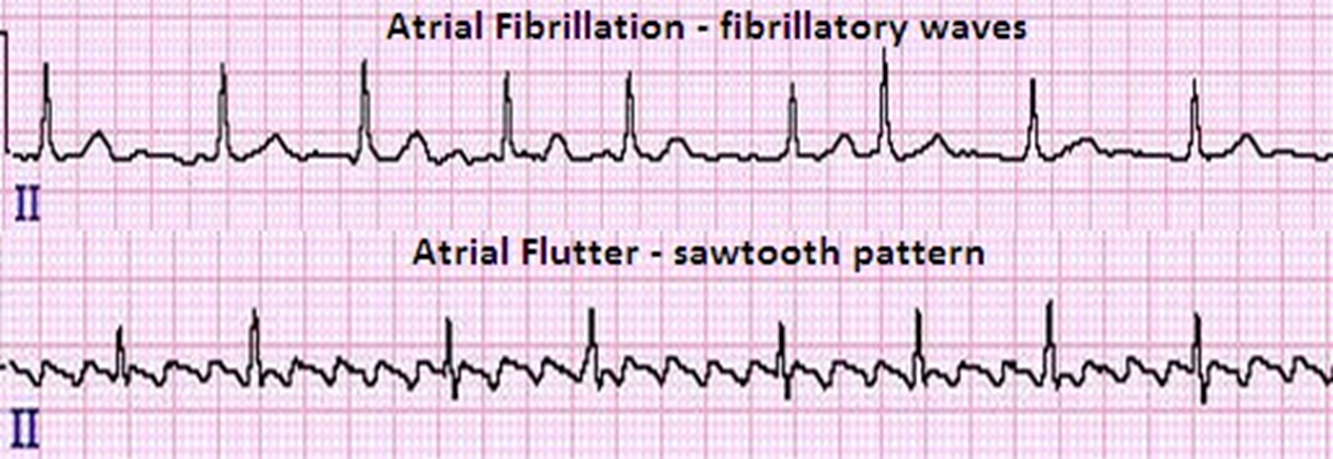While admitting a patient with pericarditis, what manifestations of this disorder should the nurse assess for?
Prolonged PR intervals.
Clubbing of the fingers.
Widened pulse pressure.
Pulsus paradoxus.
The Correct Answer is D
Choice A rationale
Prolonged PR intervals occur with first-degree AV block, not typically with pericarditis.
Choice B rationale
Clubbing of the fingers is a loss of the normal angle between the base of the nail and the skin. This finding can be found in endocarditis, congenital defects, and/or prolonged oxygen deficiency. It is not a typical manifestation of pericarditis.
Choice C rationale
Widened pulse pressure occurs with valvular heart disease, not typically with pericarditis.
Choice D rationale
Pulsus paradoxus is a sign of cardiac tamponade, a serious complication of pericarditis. As the compression of the heart increases, decreased left atrial filling decreases cardiac output.
Nursing Test Bank
Naxlex Comprehensive Predictor Exams
Related Questions
Correct Answer is B
Explanation
Choice A rationale: Adenosine Adenosine is a naturally occurring substance that relaxes and dilates blood vessels. It also affects the electrical activity of the heart. Adenosine is used to help restore normal heartbeats in people with certain heart rhythm disorders. However, it is not typically used for atrial fibrillation.
Choice B rationale: Diltiazem Diltiazem belongs to a class of medications called calcium-channel blockers. It works by relaxing the blood vessels so the heart does not have to pump as hard. Diltiazem also increases the supply of blood and oxygen to the heart. It is used in adults alone or in combination with other medications to treat hypertension (high blood pressure) or symptoms of angina (chest pain). Diltiazem injection is used in adults to treat certain heart rhythm disorders such as atrial fibrillation.
Choice C rationale: Atropine Atropine is a tropane alkaloid and anticholinergic medication used to treat certain types of nerve agent and pesticide poisonings as well as some types of slow heart rate, and to decrease saliva production during surgery. However, it is not typically used for atrial fibrillation.
Choice D rationale: Captopril Captopril is used in adults alone or in combination with other medications to treat high blood pressure (hypertension) and congestive heart failure.
Captopril is also used to improve survival and reduce the risk of heart failure after a heart attack in patients with a heart condition called left ventricular hypertrophy (enlargement of the walls of the left side of the heart)4. However, it is not typically used for atrial fibrillation.

Correct Answer is D
Explanation
Choice A rationale
Intermittent claudication and pallor are not typically symptoms of a myocardial infarction. Intermittent claudication, or pain in the legs with exercise, is more commonly associated with peripheral artery disease. Pallor, or paleness, can occur with various conditions but is not a specific sign of myocardial infarction3.
Choice B rationale
Jugular vein distention and dependent edema are not typically symptoms of a myocardial infarction. These signs are more commonly associated with heart failure3.
Choice C rationale
Mid-epigastric pain and heartburn can sometimes be symptoms of a myocardial infarction, particularly in women. However, these symptoms can also occur with many other conditions, including gastrointestinal disorders3.
Choice D rationale
Sweating and cool, clammy skin are common symptoms of a myocardial infarction. These symptoms occur due to the body’s stress response to the decreased blood flow to the heart muscle3.
Whether you are a student looking to ace your exams or a practicing nurse seeking to enhance your expertise , our nursing education contents will empower you with the confidence and competence to make a difference in the lives of patients and become a respected leader in the healthcare field.
Visit Naxlex, invest in your future and unlock endless possibilities with our unparalleled nursing education contents today
Report Wrong Answer on the Current Question
Do you disagree with the answer? If yes, what is your expected answer? Explain.
Kindly be descriptive with the issue you are facing.
